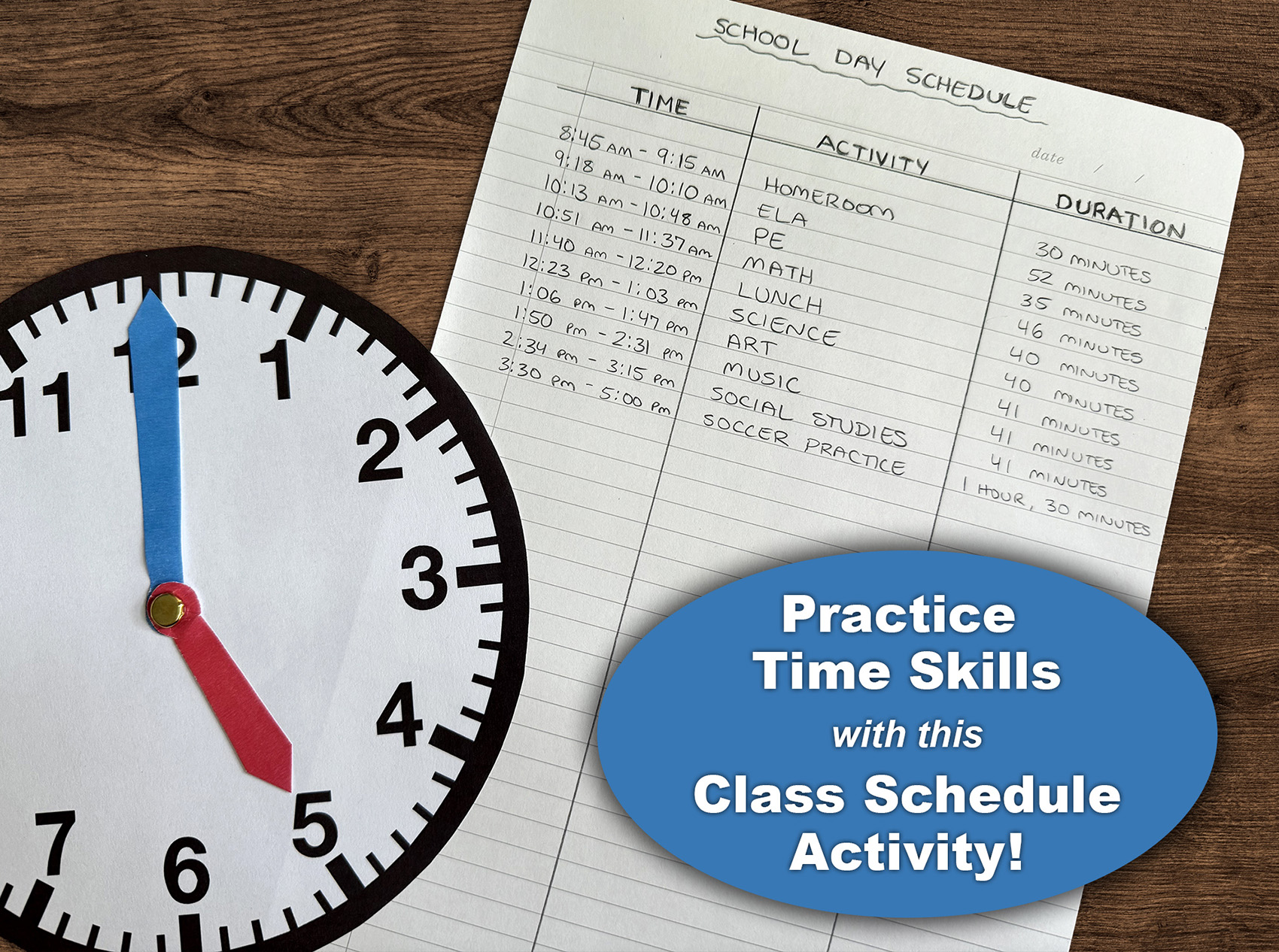
The end of summer and back-to-school season is the perfect time to talk about… well… time! Whether vacation is still winding down or whether students are familiarizing themselves with a new classroom and school year, this month’s blog explores ways to reflect and grow while working hands-on with time-telling and elapsed-time skills.
We recommend one of two versions of this activity:
Review the new school and after-school schedule.
Lay out the schedule of a favorite—or perfect!—summer day. (Just be aware that these versions of the activity are more likely to stick to hours, half hours, and quarter hours rather than to-the-minute skills!)
Materials:
this cut-out clock template, one copy per child
alternately, gather construction paper, markers, and a straight edge or protractor
hole punchers
brass paper fasteners, one per child
lined paper, one sheet per child
pencils
a copy of the class schedule if doing that version of the activity
Step 1: Introduction
Explain the importance of telling time and knowing how long things last when it comes to planning your day and keeping on schedule.
If you’re a teacher using this as a back-to-school activity to introduce the various subject blocks, class periods, or times for specials, it’s the perfect opportunity to review what they can expect for each in terms of content and procedures.
If you’re a parent winding down from vacation—or a teacher who wants to use the activity for reflection rather than learning the schedule—ask children to think of the best day they had during summer break. You can also open the creative door by letting them plan an imaginary, perfect summer day instead.
Step 2: Prepare Your Clocks
Pass out copies of the clock printout. Have students cut out the clock face and hands. Hole punch the black circle in the middle of the clock face and the white circles on the minute and hour hands. Then assemble the clock by using a brass paper fastener to affix the hands.
If you’re making clocks by hand, trace the clock face using a circular object and cut it out. Use a straight edge or protractor to accurately space out the hours, then label them and fill in the minutes using a bold marker. Then trace and cut out the hands. Hole punch and assemble in the same way.
Use this time to review relative sizes of the minute and hour hands, how many hours are in a day, how many minutes are in an hour, and so on. This kind of review is always better when kids have physical clock pieces in their hands!
Step 3: Make Your Schedule
Now grab your lined piece of paper. Draw two vertical lines on the paper to divide it into three columns: time (left), activity (middle), and duration (right). Then go through the students’ days!
If reviewing the school-year schedule, write down when each subject or activity starts and ends. Ask them to think beyond the classroom to include any extracurricular activities, planned homework time, bed time, and so on.
If reflecting on or planning a summer day, decide when people wake up, have meals, swim, see a movie, go fossil hunting—the sky’s the limit!
Step 4 - Time to Tell Time!
For every time listed on the student’s itinerary, position the hour and minute hands correctly. As they move between activities, calculate the elapsed time to see how long each one takes. Write that down in the “duration” column. If a student discovers they over- or underestimated how much time to spend on something, it’s time to erase and adjust the schedule accordingly!
When they’re all done, each child should have a schedule of classes or daily plans with specific start times and durations to illustrate the usefulness of elapsed time when it comes to planning.
You can even include an optional writing task to expand upon the experience, such as explaining why particular activities are included in their best summer day, or what they hope to learn in the new school year.
—-----------------------------------------------
And there you have it! An end-of-summer, back-to-school activity that gives kids hands-on experience with real-world applications of clock skills. Afterward, explore these Super Teacher Worksheets time-telling and elapsed-time resources to reinforce the concepts.